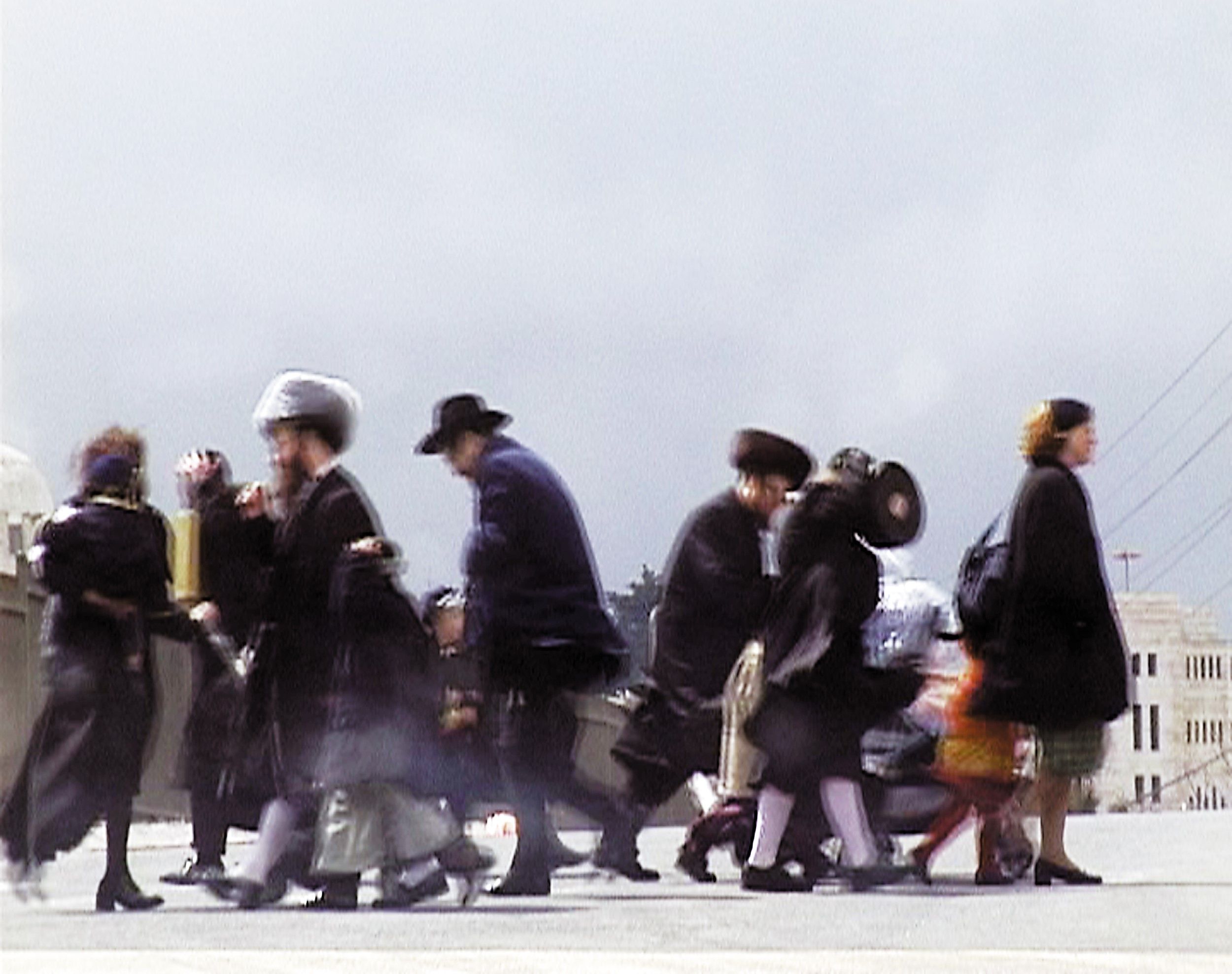
When Adar Enters
Young and old in carnival attire, dressed as animals, characters from literature or history, soldiers, and policemen. Girls and young women are preening in bridal gowns: Queen Esther on the eve of her wedding, celebrating the victory of her people. In her film, Bartana raises questions concerning the place of rituals and ceremonies common to Israeli society. She has chosen to film Purim because it is the only holiday during which, in contrast to all other days of the year, religious Jews permit themselves to cast off the bonds of “prohibited and permitted” behaviour. They celebrate the rescue of the Jews in the Kingdom of Ahashveros in Persia from Haman's plot to exterminate them. It is considered a blessing to devote the Purim holiday to a feast with drinking, merriment, the exchange of delicacies among friends and giving gifts to the poor. Throughout the film, we are witness to stolen glances directed back towards the camera and hidden faces that create a sense of threat and approaching catastrophe. Despite the costumes and the carnival atmosphere, the exceptional presence of a camera in the religious quarter and the sense of strangeness and suspicion evoked by its very presence, reveal the fear that outsiders are taking advantage of the image of ultra-orthodox Jews by entering their world – the fear that the camera will not convey the codes of that world but only its masks.